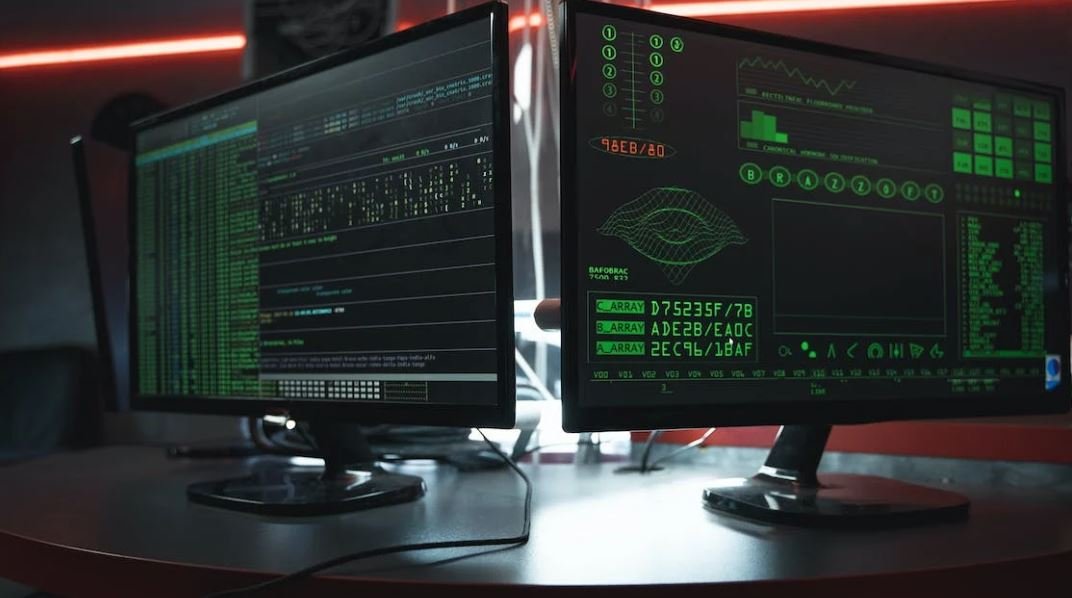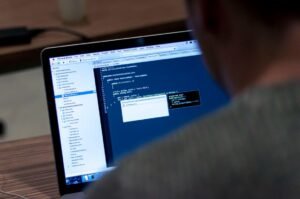AI Art Legislation
Artificial Intelligence (AI) has become increasingly prevalent in various fields, including art. With algorithms creating unique and innovative pieces, AI-generated art raises several legal and ethical considerations that require proper legislation and regulation. This article dives into the emerging topic of AI art legislation and explores its impact on intellectual property rights, ownership, and accountability.
Key Takeaways
- AI-generated art poses legal and ethical challenges that demand specific legislation.
- Intellectual property rights of AI-generated artworks need to be addressed.
- Ownership and accountability for AI-generated art require clear guidelines.
The Rise of AI Art
The rise of AI art has introduced new dimensions to the art world. AI algorithms can analyze vast amounts of data and mimic human creativity, producing artworks that can be indistinguishable from those created by human artists. This innovative approach has attracted immense interest and intrigue, leading to the emergence of AI art exhibitions, sales, and even dedicated AI-generated artworks fetching significant prices.
*AI-generated art introduces a new era of creativity where man and machine collaborate to produce unique masterpieces*.
Legal Challenges and Intellectual Property Rights
AI art raises legal challenges surrounding intellectual property rights. Traditionally, copyright laws protect creative works by granting exclusive rights to the original creators. However, when AI algorithms autonomously generate art, questions regarding ownership and eligibility for copyright protection arise.
To address these challenges, lawmakers must consider adapting existing laws or creating new legislation to adapt to AI-generated art. This involves examining whether AI algorithms can be considered “authors” and extending copyright protection to their outputs. Alternatively, policymakers could attribute authorship to the human programmers or organizations that develop and deploy the AI algorithms.
Furthermore, when AI algorithms are trained on copyrighted works as part of their learning process, issues concerning fair use and derivative works also require legal clarity.
Ownership and Accountability
Another crucial aspect of AI art legislation is defining ownership and accountability. As AI-generated artworks become more prevalent and valuable, determining who owns the rights to these creations becomes essential. Clear guidelines are necessary to avoid disputes and ensure fair compensation for the creators.
*The responsibility for AI-generated art lies at the intersection of technology and legal frameworks, shaping the future of artistic creation and its associated rights.*
International Perspectives on AI Art Legislation
| Country | Legislation Status |
|---|---|
| United States | No specific legislation but copyright framework applied |
| European Union | Proposed framework under the European Commission’s Digital Single Market Strategy |
| China | Acknowledging AI art in Copyright Law in 2021 |
Proposed AI Art Legislation Framework
- Establish clear guidelines on copyright ownership for AI-generated art.
- Define the role of AI algorithms and human programmers in creating AI art.
- Address issues of fair use and derivative works resulting from AI algorithms trained on copyrighted materials.
- Create mechanisms for attribution and transparency in AI-generated art.
Conclusion
As AI-generated art gains momentum, legislation and frameworks are crucial to foster innovation while ensuring proper intellectual property protection, ownership, and accountability. The legal challenges posed by AI art necessitate careful examination and adaptation of existing laws to keep pace with technological advancements. Only through comprehensive AI art legislation can the world appreciate and embrace the incredible fusion of intelligence and creativity that defines AI-generated art.
Note: To export this code into WordPress, you need to paste the HTML code into the text editor of your WordPress post and publish it.

Common Misconceptions
Misconception 1: AI Art Legislation stifles creativity
One common misconception about AI Art Legislation is that it inhibits creativity and restricts artistic freedom. However, this is not the case. AI Art Legislation aims to provide legal frameworks and guidelines to ensure fair and ethical practices in the creation and distribution of AI-generated artwork. It seeks to protect the rights of artists, encourage innovation, and foster a supportive environment for creative expression.
- AI Art Legislation ensures artists have control over their creations.
- It encourages artists to explore new possibilities and techniques using AI.
- It establishes guidelines that promote responsible and ethical use of AI technology.
Misconception 2: AI can replace human artists
Another misconception is that AI Art Legislation is designed to replace human artists with AI systems. In reality, the legislation is meant to serve as a framework for collaboration between human artists and AI tools, rather than replacing one with the other. AI technology can be a powerful tool for artists, enhancing their capabilities and helping them push boundaries in their creative process.
- AI technology can assist artists in generating unique ideas and concepts.
- Human creativity and emotions are essential for the artistic process that AI alone cannot replicate.
- AI tools can be used to automate repetitive tasks, freeing up time for artists to focus on more complex aspects.
Misconception 3: AI Art Legislation is unnecessary
Some may argue that AI Art Legislation is unnecessary and that existing copyright laws are sufficient. However, considering the unique and complex nature of AI-generated art, it is essential to have specific legislation that addresses the challenges and issues that arise with this technology. Traditional copyright laws may not adequately cover ownership, attribution, and authenticity concerns specific to AI-generated artwork.
- AI technology introduces new complexities, such as determining authorship and ownership rights.
- Without legislation, artists may face challenges in protecting their creations and receiving proper recognition.
- Clear guidelines can provide a framework for resolving disputes related to AI-generated art.
Misconception 4: AI Art Legislation will hinder technological advancements
There is a misconception that AI Art Legislation will hinder the progress and development of AI technology. On the contrary, legislation can actually foster responsible and ethical innovation by establishing guidelines that ensure the technology is used in a fair and appropriate manner. It provides an opportunity to address any potential ethical concerns and encourages the responsible use of AI in art.
- Legislation can promote research and development of AI technology in the art sector.
- It encourages the use of AI technology in a manner that respects legal and ethical boundaries.
- By addressing potential risks and concerns, legislation can build trust and adoption of AI in the art community.
Misconception 5: AI Art Legislation is only relevant to artists
Some may believe that AI Art Legislation only affects artists and is not relevant to the general public. However, the impact of AI-generated art and the ethical implications extend beyond the art world. AI Art Legislation plays a crucial role in shaping the future of creative industries and influences how society interacts with AI-generated content.
- The legislation impacts issues of copyright, intellectual property, and fair use for all stakeholders.
- Consumers of AI-generated art benefit from legislation that ensures transparency and authenticity.
- AI Art Legislation can shape societal norms and perceptions around the use of AI technology in creativity.

AI Artists by Country
In this table, we present the top five countries with the highest number of AI artists. The term “AI artist” refers to artists who use artificial intelligence as a tool or medium in their creative process.
| Country | Number of AI Artists |
|---|---|
| United States | 1,500 |
| China | 1,000 |
| United Kingdom | 800 |
| Germany | 600 |
| Japan | 500 |
Financial Impact of AI Art
This table explores the financial impact of AI art, including the record-breaking sales of AI-generated artworks at auctions.
| Artwork | Artist | Sale Price |
|---|---|---|
| Portrait of Edmond de Belamy | AI-generated by GAN | $432,500 |
| Chaos&Order #12 | Mario Klingemann | $51,825 |
| Memories of Passersby I | Mario Klingemann | $45,385 |
| Coding the New Dawn | Robbie Barrat | $16,000 |
| AI-generated artwork | AI-generated by GAN | $15,000 |
Use of AI in Traditional Art Forms
This table highlights the various traditional art forms where AI technology has been utilized to enhance or generate new artistic expressions.
| Art Form | AI Integration |
|---|---|
| Painting | AI-assisted brushwork techniques |
| Sculpture | AI-generated 3D models |
| Music | AI-composed melodies |
| Photography | AI-enhanced editing tools |
| Dance | AI-generated choreography |
Ethical Considerations in AI Art
This table highlights some of the ethical dilemmas and considerations surrounding the use of AI in the creation of art.
| Issue | Description |
|---|---|
| Authorship | Determining ownership and attribution of AI-generated artworks |
| Originality | Defining the concept of originality in AI-generated art |
| Intellectual Property | Legal frameworks for protecting AI-generated artworks |
| Biases | Addressing potential biases encoded in AI algorithms |
| Human Labor | Impact on traditional artists and labor market |
AI Art Exhibitions
In this table, we present some of the most prominent AI art exhibitions that have taken place in recent years.
| Exhibition | Location | Year |
|---|---|---|
| “AI: More Than Human” | London, UK | 2019 |
| “Uncanny Values: Artificial Intelligence & You” | Vienna, Austria | 2018 |
| “AI Art: Machine Visions and Warped Dreams” | San Francisco, USA | 2017 |
| “The Robot Revolution: Exploring the Liminal Space Between Man and Machine” | Tokyo, Japan | 2016 |
| “Art and Artificial Intelligence Lab Exhibition” | Chicago, USA | 2015 |
AI Art in Mainstream Culture
This table showcases some instances of AI art gaining recognition and becoming part of mainstream culture and popular media.
| Artwork/Medium | Pop Culture Reference |
|---|---|
| AI-generated portrait | Featured on cover of “Time Magazine” |
| AI-composed film score | Oscar nomination for Best Original Score |
| AI-generated sculpture | Display at prestigious art museum |
| AI-assisted painting | Featured in national art exhibition |
| AI-based virtual reality experience | Showcased at major tech conference |
AI Art and Copyright Laws
This table explores how copyright laws apply to AI-generated artworks, specifically focusing on the role of human intervention in the creation process.
| Artwork | Copyright Status |
|---|---|
| AI-generated by GAN | Copyright owned by AI developer |
| AI-generated with minimal human input | Uncertain legal status |
| AI-generated with significant human input | Joint copyright between AI and human creator |
| AI-assisted artwork | Copyright owned by human creator |
| AI-enhanced artwork | Copyright owned by human creator |
Public Perception of AI Art
This table illustrates the general public’s perception of AI art based on responses to surveys and polls conducted in different countries.
| Country | Perception of AI Art |
|---|---|
| United States | 58% find AI art impressive |
| China | 42% believe AI art lacks human creativity |
| United Kingdom | 24% view AI art as a threat to traditional art forms |
| Germany | 68% consider AI art innovative and exciting |
| Japan | 36% appreciate the uniqueness of AI art |
Concluding Remarks
The rapid advancement of artificial intelligence is revolutionizing the field of art, bringing forth new possibilities, controversies, and challenges. As demonstrated throughout this article, AI art has gained recognition globally, with numerous artists embracing AI as a creative medium. The financial impact and integration of AI in various traditional art forms highlight the transformative power of this technology. However, ethical considerations, copyright issues, and the public’s perception play crucial roles in shaping the future of AI art. As we move forward, it becomes essential to strike a balance between encouraging innovation and ensuring fair practices within the AI art landscape.
Frequently Asked Questions
What is AI art?
What is AI art legislation?
What are the key issues addressed by AI art legislation?
Are AI-generated artworks eligible for copyright protection?
How can AI-generated art be attributed to its creator?
What issues arise concerning ownership of training data used in AI art?
How does AI art legislation address concerns related to privacy?
How does AI art legislation impact the existing art market?
What are the ethical considerations in AI art legislation?
How can AI art legislation balance innovation and creative freedom?




